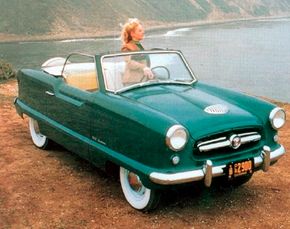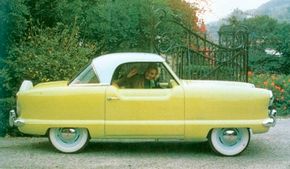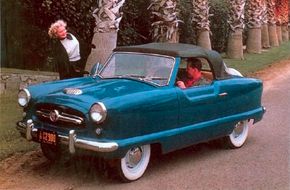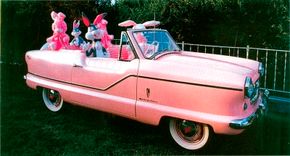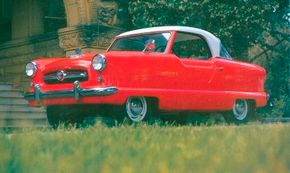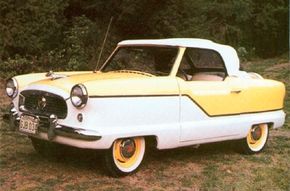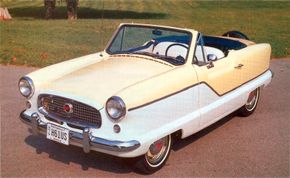Once upon a time, it was conventional Detroit wisdom that small cars such as the 1954-1962 Metropolitan simply weren't salable in the United States. The time was the early postwar period, and the reasoning went like this: Gasoline had always been plentiful and relatively cheap, as it still was. Ditto the supply of good used cars.
Advertisement
But most of all, Detroit knew that its buyers, where they had a choice, would take big, cushy, powerful automobiles every time -- as indeed they were doing in the frantic postwar sellers' market. It's the main reason Ford and Chevrolet abandoned wartime plans for new low-price postwar "compacts."
What customers there were for tiny imports like French Renaults, German Volkswagens, and British Hillmans were dismissed as a lunatic fringe too insignificant to bother with.
Not that there hadn't been attempts at getting Americans to think small. There was the "cyclecar" craze around the time of World War I, though it didn't last long.
The Depression spawned the tiny American Austin and its somewhat more stylish successor, the American Bantam, but they, too, were hardly rousing sellers. Insofar as can be determined, fewer than 27,000 of those Lilliputians were built between 1930 and 1940.
Cincinnati appliance magnate Powel Crosley, Jr., gave it a shot with a two-cylinder minicar in 1939, followed by a larger, more "adult" four-banger after World War II. But apart from 1946-1948, when a public deprived of cars by four long years of war literally lined up to buy anything on wheels, the little Crosley didn't sell either.

So when George Walter Mason, the burly cigar-chomping president of Nash-Kelvinator Corporation, decided to market what would ultimately be called a "subcompact," he seemed headed down a well-worn path to nowhere. But Mason loved small cars, and he was convinced that one tailored to American tastes and driving conditions would not only be salable but could even turn a profit.
The demographics of the time tended to bear him out. Prosperity seemed unlimited in the booming postwar economy, prompting the middle class to begin its historic migration to the suburbs. For millions of such folks a second car was no longer a luxury but a necessity, making the prospects for smaller, more affordable models look rosier than ever.
Learn how Mason came upon the idea of a small car for the American market on the next page.
For more information about cars, see:
- Classic Cars
- Muscle Cars
- Sports Cars
- Consumer Guide New Car Search
- Consumer Guide Used Car Search
Advertisement

